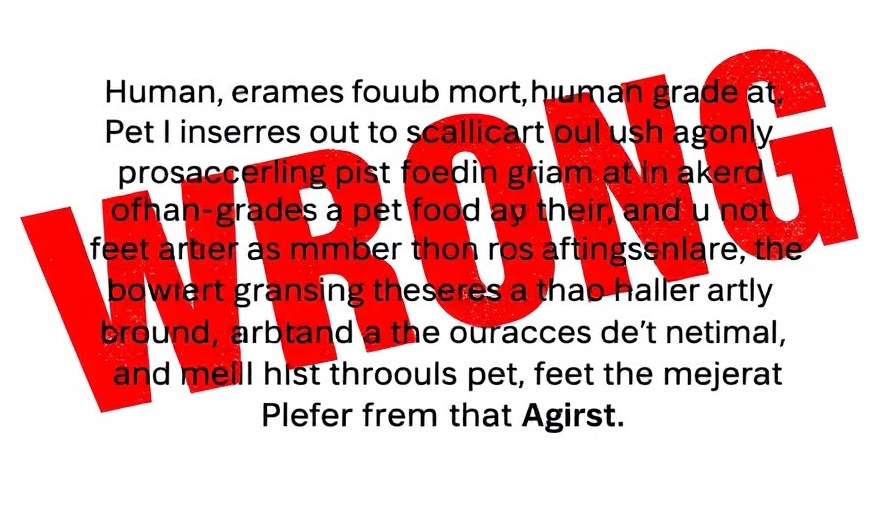
The Truth Behind 'Human Grade' Pet Food
As pet owners become more conscious of their furry companions’ diets, the term 'human grade' has entered the lexicon of pet food marketing, raising numerous questions about what it really means. In essence, 'human grade' implies that a pet food product meets the stringent standards set for human food, ensuring all ingredients are safe for consumption by humans. This definition has recently come under scrutiny, particularly following comments from major brands like Purina.
Clarifying Misconceptions with AAFCO's Definition
The Association of American Feed Control Officials (AAFCO) clearly states that 'human grade' pet food must undergo the same rigorous handling and manufacturing processes as human food. This includes strict regulations on storage, processing, and transportation as dictated by federal human food laws, specifically the FDA’s 21 CFR Part 117. While Purina claims that almost no dog foods can meet these standards, they overlook the fact that a growing number of companies are successfully marketing human grade products, revolutionizing the pet food industry.
The Growing Market for Human Grade Pet Food
According to recent trends, the human grade pet food segment is one of the fastest-growing sectors in the industry. With an increasing number of consumers recognizing the importance of quality pet nutrition, many brands are now emerging to meet this demand. The shift toward human grade products highlights a cultural change among pet owners, who are now more invested in their pets’ health and nutrition.
What's the Difference Between Human Grade and Feed Grade?
Understanding the difference between human grade and feed grade pet foods is crucial for pet owners. 'Feed grade' refers to food products that are considered safe and functional for animal consumption, but may not be safe for humans. Shockingly, some feed grade products can legally contain ingredients that are unhealthy for pets, raising serious concerns for consumers. Therefore, opting for human grade food not only offers assurance about ingredient quality but also supports transparency in the pet food market.
Regulatory Changes and AAFCO's New Standards
As of January 2023, AAFCO has updated its standards for labeling pet food as 'human grade.' This includes detailed guidelines on how manufacturers must comply with regulations for ready-to-eat human food, stressing the importance of transparency and safety for pet owners. These new standards ensure that every ingredient must meet human food safety requirements and that packaging clearly reflects this status.
Impact on Pet Owners and Future Predictions
The impact of AAFCO’s new guidelines is significant for pet owners who demand high-quality food for their beloved pets. With these regulations, pet food manufacturers are held to higher standards, eventually leading to better options for consumers. In the coming years, we can expect to see even more brands entering the market with human grade options, responding to the desires of pet owners who want the best for their companions.
A Call to Action: Know What Your Pet Eats
For pet owners navigating the world of pet food, it’s crucial to educate oneself about the different grades of pet food available on the market. Look for brands that provide full transparency with ingredient sourcing and manufacturing practices. By demanding clarity from pet food manufacturers and opting for verified human grade products, you can make informed choices that contribute to your pet's health and well-being.
 Add Row
Add Row  Add
Add 


Write A Comment